Cancer-Fighting Foods: Nutritional Guide
WALNUTS
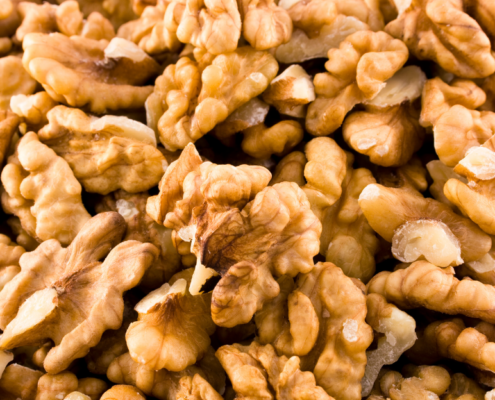
Walnuts were first cultivated almost 7000 years ago in Central Asia. Today, California produces 99% of the American supply of walnuts.
Benefits include:
- Ellagitannins increase antioxidant enzymes, decreasing free radical damage to DNA that can lead to cancer. By influencing gene expression, they decrease growth and stimulate self-destruction of mouth, esophagus, breast, cervix, colon and prostate cancer cells.
- Melatonin has been shown to decrease growth of both estrogen-receptor-positive and -negative breast cancer in isolated cells and in animals. Such studies also show decreased growth of prostate and other cancers, with effects seen all across stages of cancer development.
- Gamma-tocopherol (a form of Vitamin E) provides anti-inflammatory protection than alpha-tocopherol. In both cell and animal studies gamma-tocopherol decreases cancer cell growth.
How To Use:
Add chopped walnuts into a bean burger. Try roasting walnuts to use as a taco meat filling.
ALMONDS
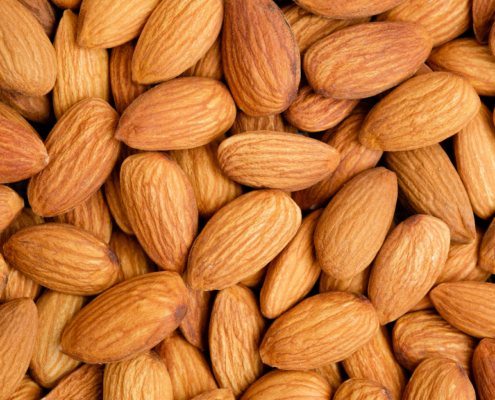
Almonds originate from western parts of Asia and China. Newlyweds in ancient Rome were showered with almonds, which were considered a fertility charm.
Benefits include:
- Alpha tocopherol (another form of Vitamin E) acts as an antioxidant, helping to protect cells from the damage caused by free radicals. The immune system also relies on vitamin E for optimal functioning.
How To Use:
The quintessential snack food that combines fiber, protein, and healthy fats. Keep a jar in your desk for a quick snack. Sliced almonds on top of hot cereal add texture, flavor, and nutrients.
PECANS
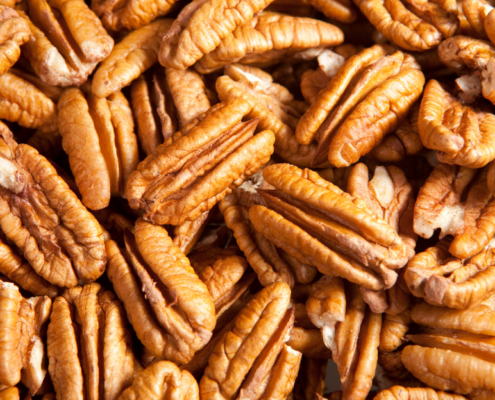
Pecans originate in Central and Eastern North America and named by Native Americans. Pecan trees range in height from 70 to 100 feet.
Benefits include:
- Gamma-tocopherol provides anti-inflammatory protection than alpha-tocopherol. In both cell and animal studies gamma-tocopherol decreases cancer cell growth.
- Flavonoids (proanthocyanidins, anthocyanidins, and flavan-3-ols) include a large group of phytochemicals. They have been shown to induce cancer cell death.
How To Use:
Top ricotta toast with pecans. Add chopped pecans to a pumpkin overnight oats recipe. Roast stone fruit such as plums and top with chopped pecans.
PISTACHIOS
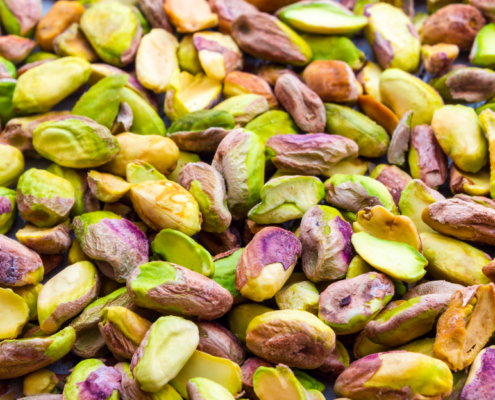
Pistachios originate from Central Asia and symbolize health, happiness, and good luck. In China, they are referred to as the “happy nut”.
Benefits include:
- Lutein and zeaxanthin are antioxidants that have are concentrated in the eyes, brain, and skin. They help to neutralize free radical damage.
How To Use:
Buy pistachios in their shell, and enjoy cracking into each for a mindful snack. Enjoy fresh sliced citrus with chopped pistachios and cinnamon.
Sign Up: Nutrition Newsletter!
Get more more of our Oncology Dietitian approved recipes, cooking videos, nutrition advice and more, straight to your inbox! Sign up for our Nutrition Newsletter here.
Cancer-Fighting Foods: Nutritional Guide
CITRUS FRUIT
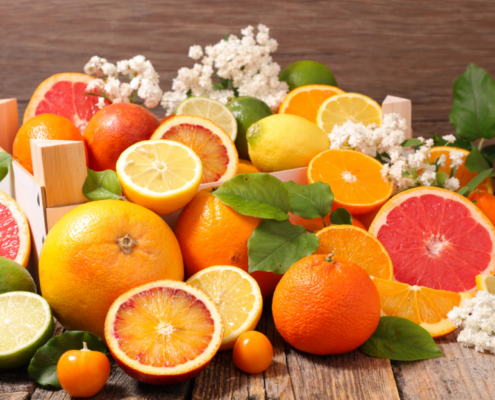
Citrus Fruits: Vitamin C, most commonly found in citrus fruits, is the most powerful antioxidant we can eat. It helps to repair cells that become damaged and might otherwise turn into cancer cells.
A serving of citrus fruit will supply all the Vitamin C we need for the day! Terpenes in the peels of citrus and have been shown to slow the growth of cancer cells.
How To Use:
Have you tried Sumo Citrus yet? This is a special seasonal citrus fruit only available at this time of the year.
ROOT VEGETABLES
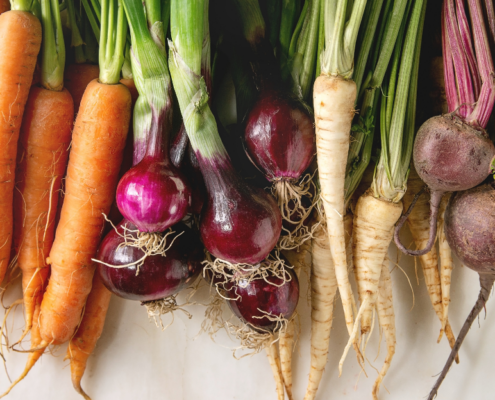
Root vegetables: Root vegetables vary in their nutrient content. Most have carotenoids which act to support our immune system. Many also have resistant starches that are shown to feed the microbes in our gut.
How To Use:
Root veggies are best when roasted! Toss with a little bit of olive oil, salt, and pepper and heat for 20-30 minutes at 400 degrees.
CRUCIFEROUS VEGETABLES
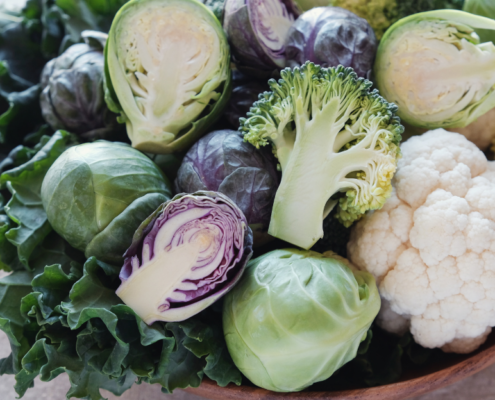
Cruciferous vegetables: Cruciferous veggies are cancer fighting super stars! They contain special compounds called glucosinolates that exert cancer protection at the cellular level.
How To Use:
The family of cruciferous vegetables is a tasty one! From an arugula salad to roasted Brussels sprouts to trendy cauliflower rice, the options are endless!
LEAFY GREENS
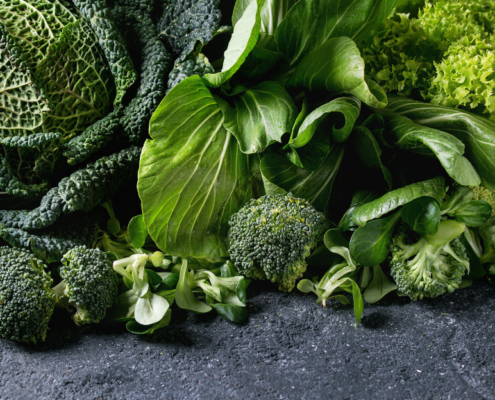
Leafy Greens: Dark green leafy vegetables are full of carotenoids. They protect our cells from outside damage. Most leafy greens also have folate, a B vitamin, that repairs cells that get damaged.
How To Use:
Keep a bag of baby spinach on hand to toss into omelets, soups, stews, marinara or your favorite smoothie.
Sign Up: Nutrition Newsletter!
Get more more of our Oncology Dietitian approved recipes, cooking videos, nutrition advice and more, straight to your inbox! Sign up for our Nutrition Newsletter here.
Cancer-Fighting Foods: Nutritional Guide
BEANS
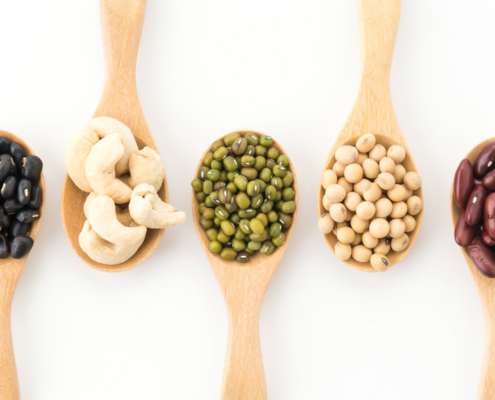
Beans are some of the most widely available sustainable foods on the market, requiring little water to produce a high yield. These bacteria use the plant to draw nitrogen from the air and store it in the roots of the plant, creating an underground green warehouse. Once the legumes have finished their life cycles, the stored nitrogen is released into the soil, available for other plants to use.
All beans supply a source of plant protein, fiber, healthy fats, as well as folate, iron, potassium, and zinc.
Beans are one versatile food! One of the easiest ways to eat more beans is to replace beans in recipes that call for ground meat, such as chili, burgers, or tacos.
WHOLE SOY FOOD
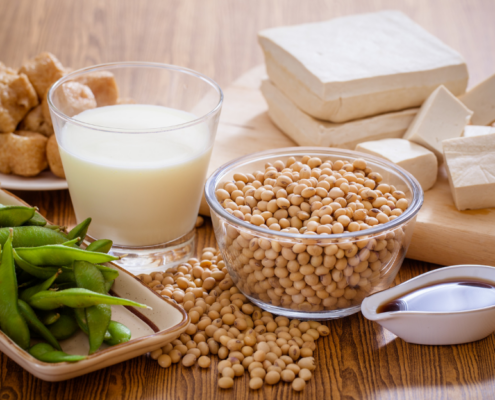
Soy is technically classified as a legume, and examples are tofu, edamame, tempeh, miso, and natto. Replacing animal proteins with plant proteins, found in whole soy food, is a significant way to benefit the environment.
Higher in protein and healthy fats while lower in carbs compared to other beans.
Whole soy foods are a source of fiber, omega 3 fats, calcium, iron, magnesium, and potassium. They also contain isoflavones. Snack on edamame in the pods or as a roasted bean. Crumble tofu and use as a substitute for scrambled eggs.
WHOLE GRAINS
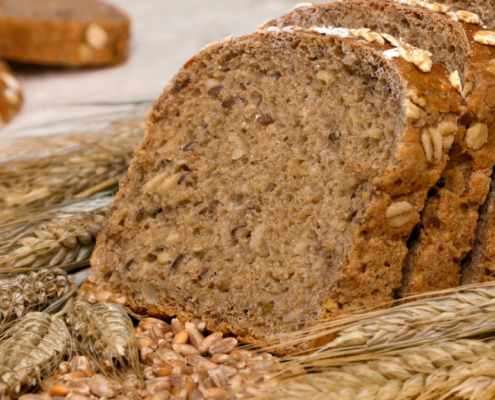
Grains rank among the lowest in all foods on greenhouse gas emissions. In addition, they require comparatively less water than animal products.
The bran of whole grain contains important antioxidants, B vitamins, and fiber. The germ is the “embryo” which contains many B vitamins, some protein, minerals, and healthy fats. The endosperm is a whole grain’s food supply and contains carbohydrates. Whole grains are another versatile food! Enjoy oats as a hot cereal, as a substitute for breadcrumbs, or in your smoothie.
Did you know that wild rice is not rice, but is a semi-aquatic grass? It is the perfect side to any dish and can be combined with a variety of ingredients and flavors. Try wild rice with apples or with pepitas and sun-dried tomatoes.
SEAWEED
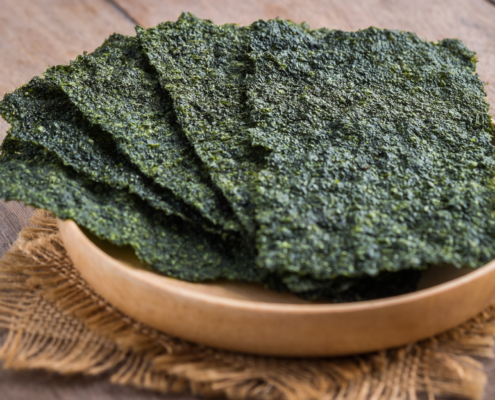
Its production is the least impactful form of aquaculture. Seaweed gets everything it needs from the water around it, providing generous yields with no need for fertilizers and no pollution. In addition, seaweed filters excess nutrients such as phosphorus and nitrogen from the water, offering a solution to problems posed by agricultural run-offs, fish farms and sewage facilities.
All types of seaweed contain a high concentration of fiber and water. It contains glutamic acid, which is an amino acid that converts to glutamate and imparts an umami flavor to recipes. Depending on the type of seaweed and when it’s harvested, it may contain iron and magnesium. Most seaweed contains omega 3 fats, as well as polyphenols and carotenoids.
Dried seaweed is the most used and can be softened by soaking in water for a few minutes. Seaweed does not need to be cooked before eating and is delicious when added to salads or soups. You might enjoy the trendy seaweed snacks made from nori
Sign Up: Nutrition Newsletter!
Get more more of our Oncology Dietitian approved recipes, cooking videos, nutrition advice and more, straight to your inbox! Sign up for our Nutrition Newsletter here.
Cancer-Fighting Foods: Nutritional Guide
ASPARAGUS
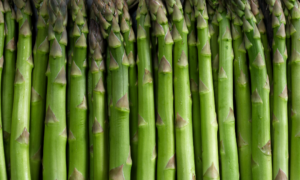
Asparagus
One of the most iconic spring vegetables, asparagus (Asparagus officinalis) is grown around the world and has been celebrated for millennia. Ancient Egyptians are said to have enjoyed it as many as 20,000 years ago. Asparagus comes in four varieties: green, white, purple and wild.
Contains:
Inulin is a type of dietary fiber called a fructan that functions as a prebiotic, which means that it nourishes health-promoting bacteria in the body.
Did you know you can enjoy asparagus raw? Try enjoying raw asparagus salad by using a vegetable peeler and creating long “ribbons” of asparagus. Toss with your favorite vinaigrette.
STRAWBERRY
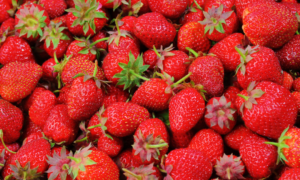
Strawberry
Until hybridization with larger, juicier varieties, earlier cultivated strawberries were tiny, much like wild strawberries. Unlike any other fruit, strawberry seeds are on the outside (rather than the inside) of the fruit, technically making the strawberry not a berry at all.
Contains
Anthocyanins influence cell signaling in ways that increase antioxidant, anti-inflammatory and carcinogen-deactivating enzyme.
Strawberries really shine when eaten raw, either completely unadorned, or sliced and tossed with a bit of sugar, orange juice, red wine or balsamic vinegar.
SNOW PEAS, SUGAR PEAS/SUGAR SNAP PEAS
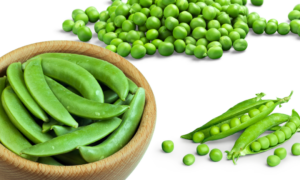
Snow peas, sugar peas/sugar snap peas Peas have been a staple food since at least 3000 BCE. The French term for sugar snaps is mangetout which translates to “eat it all”.
Contains:
Rich in fiber and contain Vitamin C & Vitamin A for antioxidant activity. Folate, one of the B vitamins best known to help form red blood cells and is responsible for helping cells grow and divide properly.
Eaten raw or just quickly blanched, both snow peas and sugar snap peas are delicious on their own: their sweet, green pea-taste and super crisp texture are mighty fine on their own. Of course, they also taste great when tossed into a stir-fry, added to a salad or pickled in brine!
RAMPS
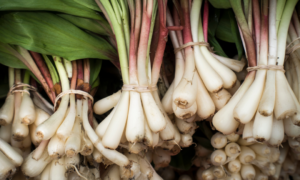
Ramps are a welcome sign of spring and in the allium family alongside spring onions and leeks. Sometimes referred to as wild garlic, which is a completely different plant.
Contains
High in Vitamins A and C, which act like antioxidants to repair our damaged cells.
Ramps are a seasonal substitute for any recipe that calls for spring onions, scallions, or garlic. Ramps have a peppery, garlicky bite that adds fresh flavors to many dishes. They can be sauteed, chopped up and added to grains salads or eggs, or served in a springtime risotto.
Sign Up: Nutrition Newsletter!
Get more more of our Oncology Dietitian approved recipes, cooking videos, nutrition advice and more, straight to your inbox! Sign up for our Nutrition Newsletter here.
Cancer-Fighting Foods: Nutritional Guide
PROBIOTICS
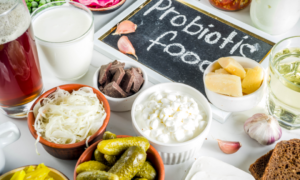
Probiotics
Probiotics are live microorganisms that if consumed in adequate amounts have health benefits.
Gut Helper:
- Increase numbers of beneficial bacteria that prevent growth of harmful ones
- May help with digestion of lactose and reduce symptoms of intolerances
- Boost the immune response
PREBIOTICS
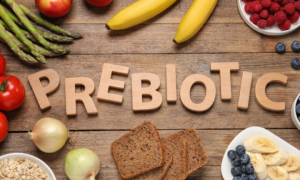
Prebiotics
Prebiotics are specific fibers that are fermented by bacteria in the gut which selectively increase beneficial bacteria.
Gut Helper:
- Enhances signaling of bowel movement frequency
- Heightens feelings of hunger and satiety
- Increases water content and bulk of stools for softer, more frequent stools
- Aids in weight loss
FIBER
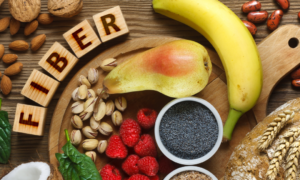
Fiber
Fiber is an essential component of a healthy diet. Found in plant-based foods such as fruits, vegetables, whole grains, nuts, and seeds, fiber plays a crucial role in digestion and overall well-being.
Gut Helper:
- Promotes regular bowel movements
- Slows blood glucose (sugar) and fat absorption
- It’s fermented by good bacteria that produce by-products called short-chain fatty acids
- These byproducts reinforce the gut lining that protect against harmful microorganisms
POLYPHENOLS
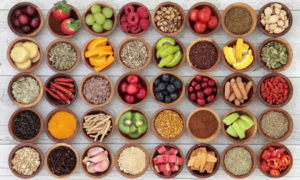
Polyphenols
Polyphenols are naturally occurring compounds found in plants. They are not readily digested in the stomach and go to the colon to be metabolized by microorganisms.
- Fruits: Apples, blueberries, cherries, grapes, pears and strawberries
- Vegetables: Broccoli, cauliflower, cabbage, tomatoes and Brussels sprouts
- Spices: Turmeric, ginger and red pepper flakes
- Beverages: Green tea, coffee and red wine
- Other: Dark chocolate, soy products and peanuts
Gut Helper:
- Antioxidant properties, which lessen risk for chronic disease
- Reduces inflammation and possibly obesity
- May improve neurocognitive function and mood
- Some polyphenols are antimicrobial
Sign Up: Nutrition Newsletter!
Get more more of our Oncology Dietitian approved recipes, cooking videos, nutrition advice and more, straight to your inbox! Sign up for our Nutrition Newsletter here.
Cancer-Fighting Foods: Nutritional Guide
PUMPKIN SEEDS
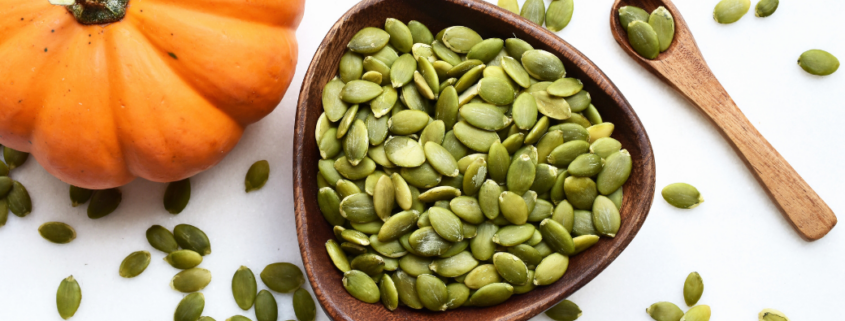
Pumpkin Seeds
Also known as pepitas, pumpkin seeds come from a variety of squash. They are native to the Americas and were used in traditional medicine to reduce inflammation.
Nutrition:
Protein: One of the top plant sources of protein, with 5 grams in just 1 ounce. High in magnesium, meeting 40% of our Daily Value in 1 ounce. Magnesium is responsible in over 300 enzyme biochemical reactions in our body.
How To:
Try them raw, and toast them to add a delicious and nutritious crunch to hot cereal, salads, or your favorite grain dish.
PARSLEY
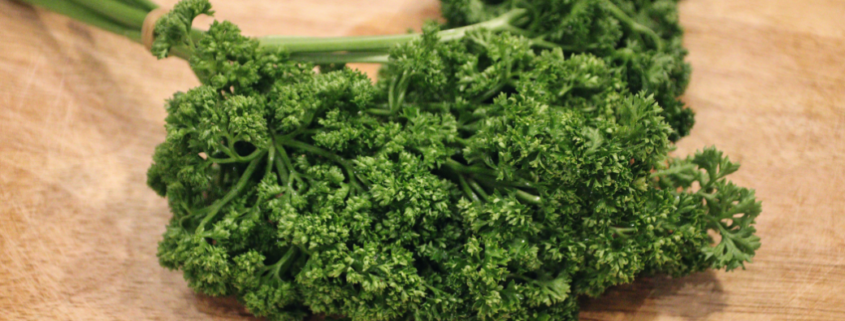
Parsley
Probably the best-known herb in our country, but not as a culinary companion. You’ve seen parley as a garnish; however, it packs a flavorful punch to almost any creation.
Nutrition:
Vitamin C: The strongest anti-oxidant we can possibly eat.
Flavonoids: Show promise as anti-inflammatory agents.
How To:
Go Mediterranean! Enjoy a traditional tabbouli salad, which is technically more parsley than the other ingredients included in the recipe. Spruce up your veggies, pasta, rice, or egg dishes with an edible parsley garnish.
TURNIPS
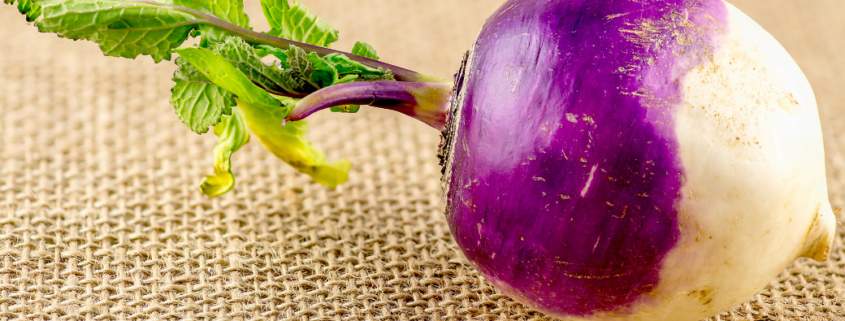
Turnips
Did you know that turnips belong to the highly nutritious cruciferous vegetable family?
Nutrition:
Glucosinolates & Indoles: Compounds that destroy cancer-causing agents.
How To:
Simply roast them for a delicious side or mash them with other root vegetables for a boost of nutrition.
WATERCRESS
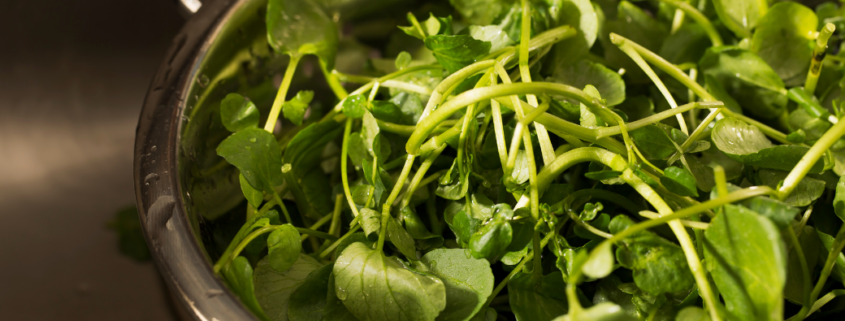
Watercress
Is a member of the mustard family and enjoyed since the ancient Romans used it to prevent baldness.
Nutrition:
Flavonoids: Act to suppress inflammation.
Carotenoids: Support the optimal function of our immune system.
How To:
It is a delicate green that wilts quickly. Toss into your green salads, or add a peppery kick to your sandwiches.
Sign Up: Nutrition Newsletter!
Get more more of our Oncology Dietitian approved recipes, cooking videos, nutrition advice and more, straight to your inbox! Sign up for our Nutrition Newsletter here.
Cancer-Fighting Foods: Nutritional Guide
WATERMELON
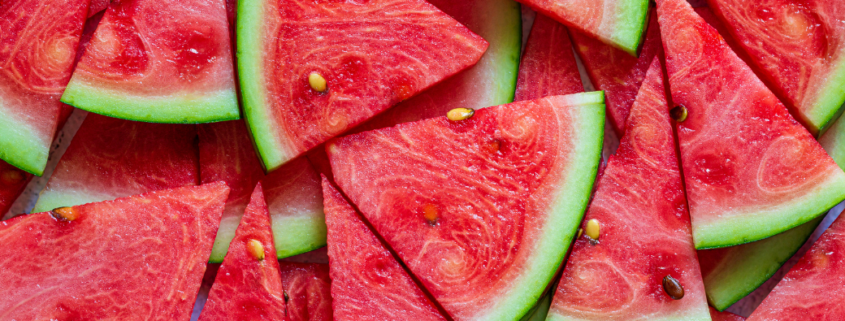
Watermelon
Aptly named because it is 92% water, and a great thirst quencher. A ripe watermelon should be firm and heavy. Traditional wisdom says that tapping a watermelon is the best way to determine its quality, and a good watermelon should give a dull thud when tapped.
Nutrition:
Lycopene: An antioxidant that may reduce inflammation and oxidative stress, which can lower the risk of cancer. Lycopene may also lower blood levels of insulin-like growth factor (IGF), a hormone that promotes cell division, which can lead to cancer.
Vitamin E: An antioxidant that reduces inflammation and repairs damaged cells.
How To:
The quintessential summer treat, enjoy as it is! Try enjoying watermelon slices with a spritz of lime juice.
To use the entire watermelon, consider pickling the rind.
Enjoy protein seeds for a high protein snack.
CUCUMBER
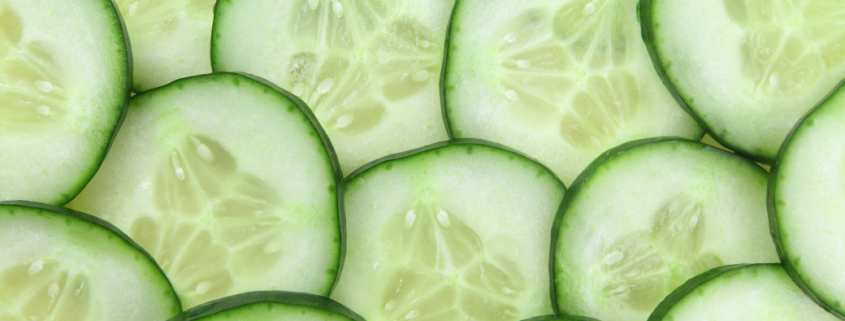
Cucumber
Thirst quenching cucumber is 96% water by weight. A native of India, the cucumber (Cucumis sativus) is among the oldest domesticated plants, referenced in literature and art from antiquity. Farmer’s markets provide Asian and Middle Eastern cucumbers, as well as a slew of heirloom varieties.
Nutrition:
Lignans: Possess anti-inflammatory properties and are linked with reducing the risk for hormone-related cancers.
How To:
Enjoy them blended in an aqua fresca for a refreshing summer drink.
Slice them to add to your favorite tomato and onion summer salad.
Include them in a gazpacho for a summer staple food.
PEACH
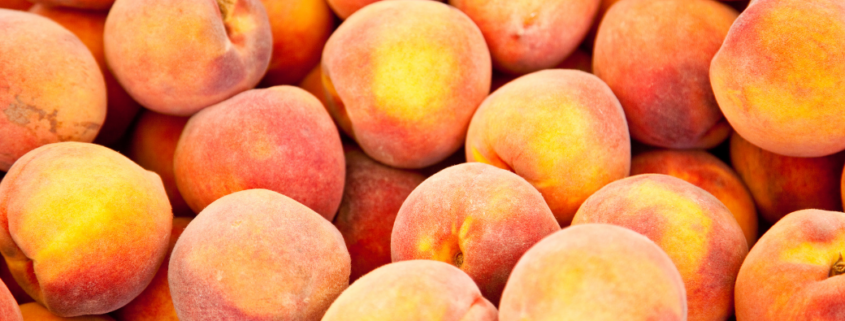
Peach
There are over 300 varieties, but three categories of peaches, including freestone, clingstone, and semi free stone. Peach fuzz protects the fruit from extra water and may help keep bugs away!
Chances are that if you are eating a peach outside of its growing season (May through August), that peach traveled thousands of miles to reach you.
Nutrition:
Packed with both Vitamins A & C, which are crucial for immune function.
Polyphenols in peaches have shown to exhibit antioxidant and anti-inflammatory compounds.
How To:
Peaches are delicious on their own, but also great in a summer salad with arugula.
Try peaches in recipes that you use tomatoes, for example with basil and mozzarella for a simple appetizer, or in a gazpacho.
Peaches are great on the grill!
LETTUCE
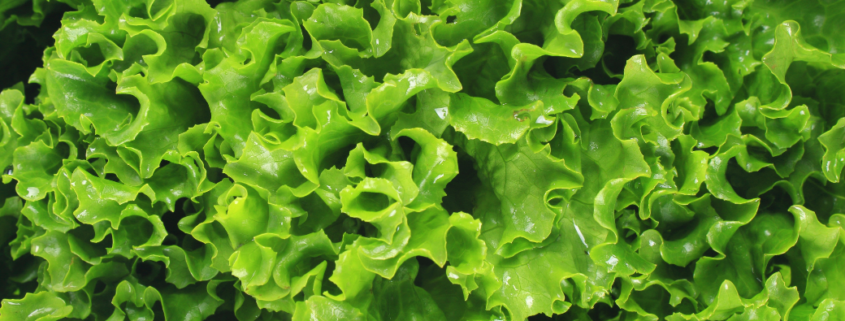
Lettuce
There are many different varieties and colors of lettuce, from loose-leaf to Romaine to Crisphead. The ancient Greeks wrote extensively about lettuce in both medical and culinary texts.
Nutrition:
Lettuce gives us fiber, which is important to support gut health.
Nutritional value varies depending on the type of lettuce, but most supply vitamins A, C, and the minerals calcium, potassium, iron, and folate.
How To:
Store in the fridge for up to a week, but loose-leaf and Butterhead varieties should be consumed within a couple days of purchasing.
Try grilled Romaine for another plant-based choice this season.
Fresh, young lettuce is delicious with a simple vinaigrette with olive oil, lemon juice, and a pinch of salt.
Sign Up: Nutrition Newsletter!
Get more more of our Oncology Dietitian approved recipes, cooking videos, nutrition advice and more, straight to your inbox! Sign up for our Nutrition Newsletter here.
Cancer-Fighting Foods: Nutritional Guide
NECTARINES
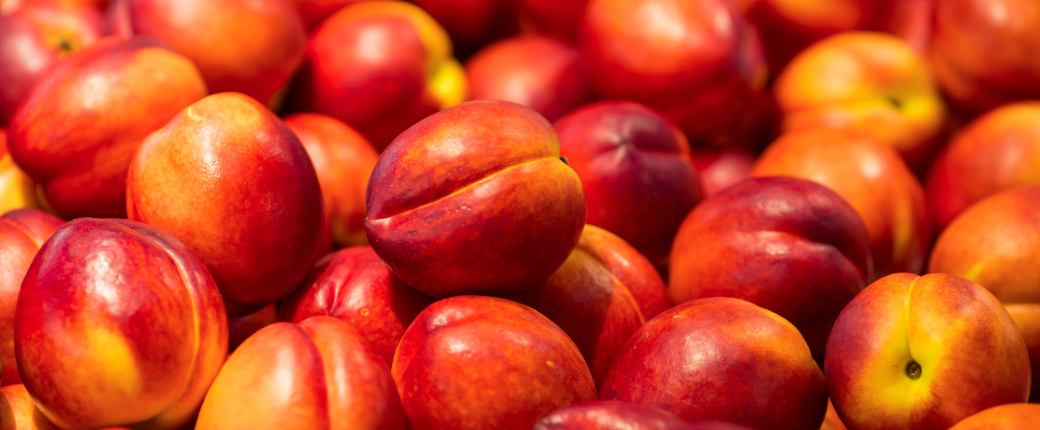
Nectarines
Nectarines are identical to peaches except for one gene and this gene difference makes nectarine skin smooth and peach skin fuzzy. Nectarines get their name from ‘nectar’, which was the sweet fruit that the gods ate.
Nutrition:
Vitamin C
This vitamin is essential as an antioxidant. It travels throughout our body and takes away the free radicals that could otherwise damage our cells.
Fiber
Most Americans do not consume recommended amounts of fiber. Eating more fiber is linked with improved blood sugar control, lowering cholesterol levels, and gut health.
How To:
The perfectly sweet summertime treat! Enjoy as a snack or slice into your favorite green salad.
ZUCCHINI
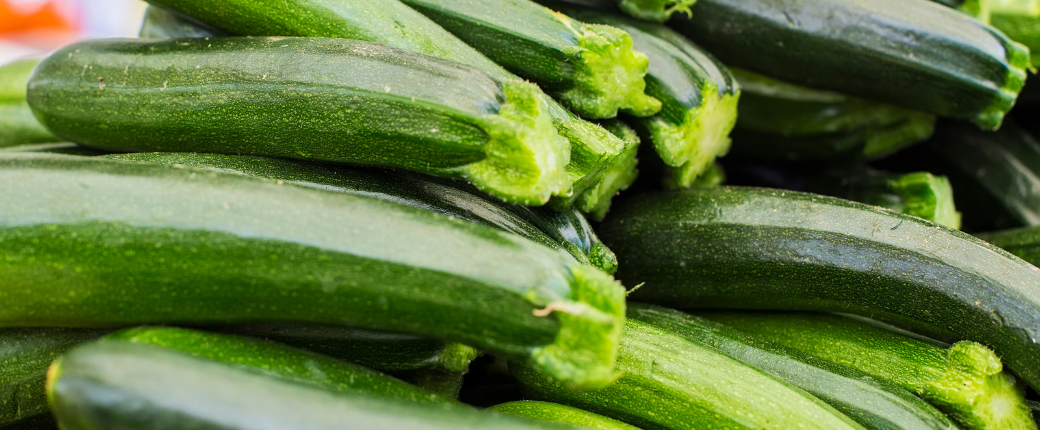
Zucchini
The word squash originally comes from the Narragansett nation, who called it askutasquash, meaning raw or uncooked — many summer squash are still enjoyed raw in salads.
While summer squash grown in warmer regions of the world is available year-round in supermarkets, it is best enjoyed in season for peak flavor and texture.
Nutrition:
Contain Fiber and Vitamin C and are high in water content to help hydrate us.
How To:
Super versatile in many dishes, from being a low carb substitute to being grated to add to recipes.
Try zucchini noodles or baked “fries” to swap in fiber and nutrients.
Make a zucchini “boat” and stuff with your favorite ingredients like beans or ground turkey and top with tomatoes and onions.
HONEYDEW MELON
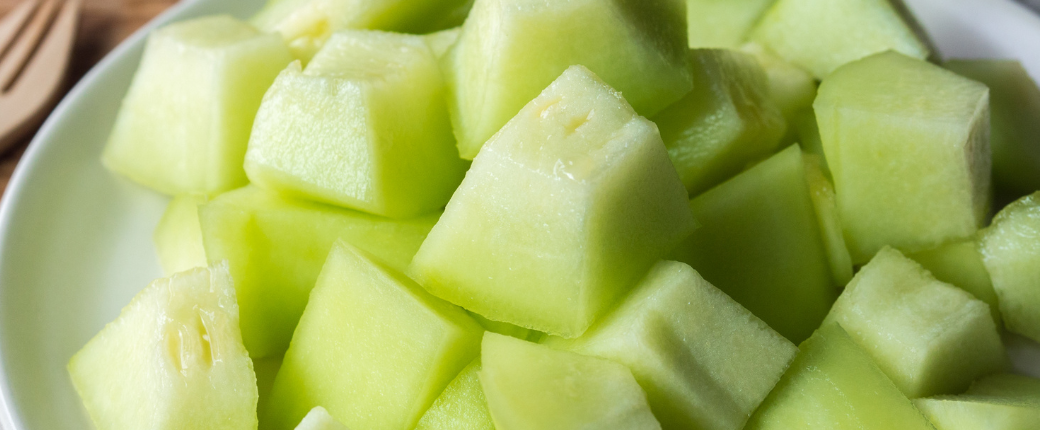
Honeydew Melon
Honeydew with white skin taste sweeter than the yellow-skin variety. Honeydew requires warm and sunny weather to grow, so the peak harvest time is August through October.
Nutrition:
Supply a hefty dose of vitamins A and C as well as potassium.
Vitamins A and C are both crucial for immune system function.
Potassium is a mineral that many Americans do not eat enough of. It is responsible for regulating our cardiac and nervous systems.
How To:
Honeydew when is in season is sweet enough for dessert! Try a refreshing take on honeydew with a squeeze of fresh lime juice.
Honeydew also tastes delicious when grilled for a plant-based addition to your diet.
RASPBERRIES
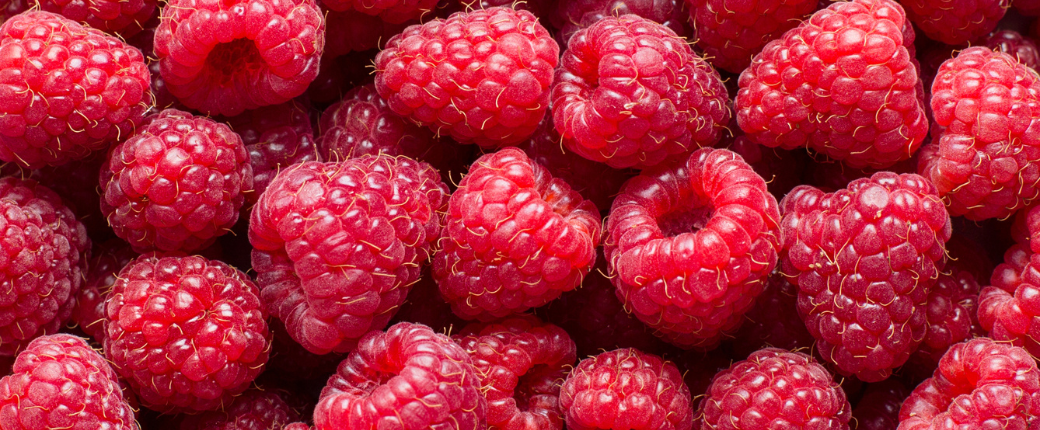
Raspberries
Did you know that raspberries are in the rose family and come in four colors: gold, black, purple, and red?
Nutrition:
A serving of raspberries supplies a whopping 8 grams of fiber.
Contain ellagitannins, a polyphenol that has anti-cancer properties.
How To:
Raspberries are sweet enough for dessert, and delicious when added to hot cereal, yogurt, or your smoothie.
Sign Up: Nutrition Newsletter!
Get more more of our Oncology Dietitian approved recipes, cooking videos, nutrition advice and more, straight to your inbox! Sign up for our Nutrition Newsletter here.
Cancer-Fighting Foods: Nutritional Guide
PUMPKIN
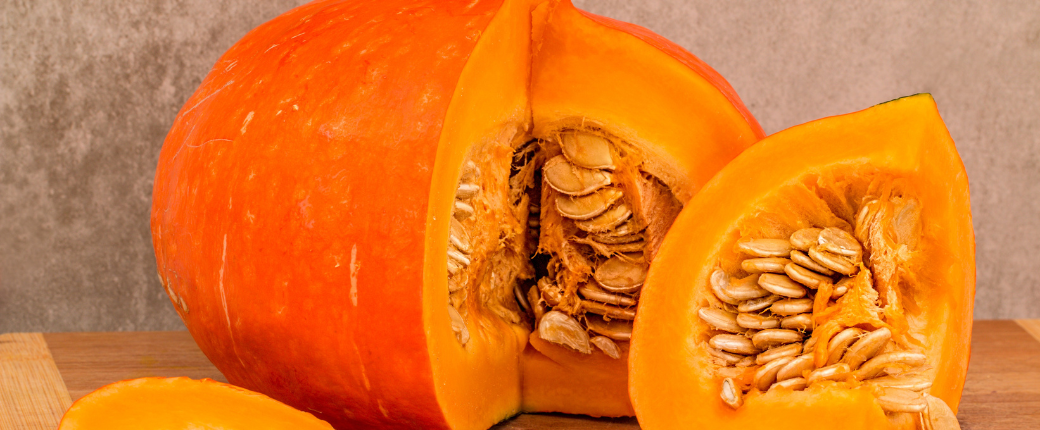
Pumpkin
Pantry staples are important in meal planning/prepping. Dickinson pumpkins, also known as Dickinson squash, are used to make most of the canned pumpkin we eat today.
Nutrition:
Packed with carotenoids, including the popular beta carotene. They are found in orange, dark green, yellow, and red fruits and veggies. They are associated with protection against many cancer types, partly due to the way they inhibit the formation of carcinogens in our bodies.
How To:
Canned pumpkin, and not the sweet pumpkin pie filling, is easy to add to hot cereal, a smoothie, or your favorite soup or stew. It’s a reliable and versatile pantry staple!
MANGO
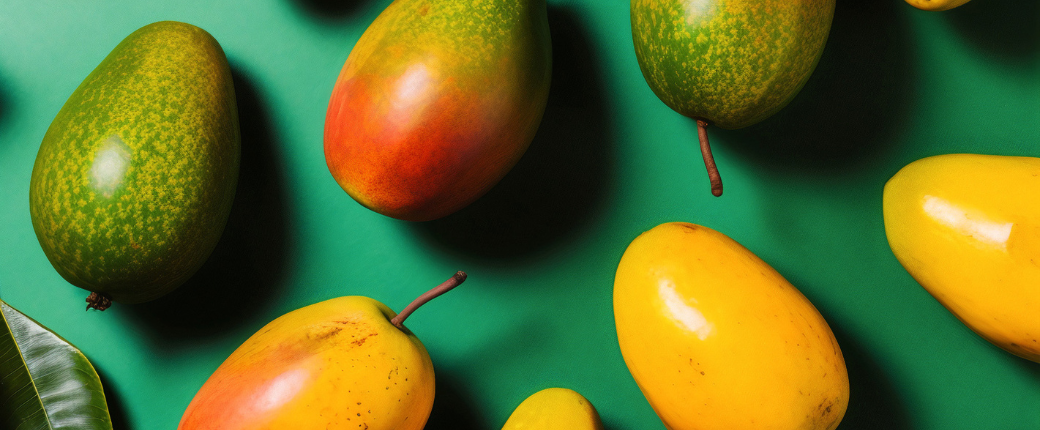
Mango
We know that we can take advantage of the convenience and nutrition in frozen fruits and veggies. They are another staple in meal prepping.
Nutrition:
Like pumpkin and winter squash, mango is full of carotenoids. Also, mango boosts our fiber intake. Fiber is a vital component of a cancer protective diet. Including more fiber in your diet helps to regulate blood sugars, lower cholesterol, support gut health, and control our appetite.
How To:
Use frozen mango in your favorite smoothies, or smoothie bowls. Also try frozen mango stirred into your yogurt, cottage cheese, or hot cereal.
BEANS
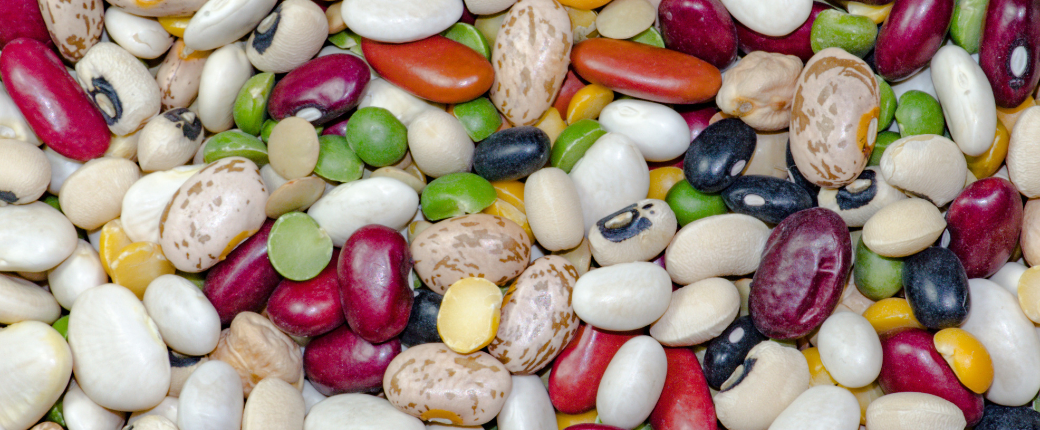
Beans
Any super pantry staple, beans are a guaranteed way to add cancer nutrition while saving us time and money in meal prep.
Nutrition:
Beans are an impressive source of fiber and a versatile ingredient. Most beans also include polyphenols, which work as antioxidants. Eating antioxidants may help our body’s defenses against the formation of damaging substances to our cells.
How To:
What can’t we use beans for? Rinsing them will remove the starches that cause gas, and also about a 1/3 of the sodium. Try tossing beans into your green salad, or into your favorite stew. Mash them for a plant protein boost to avocado toast or spread onto your favorite vegetable wrap.
GINGER
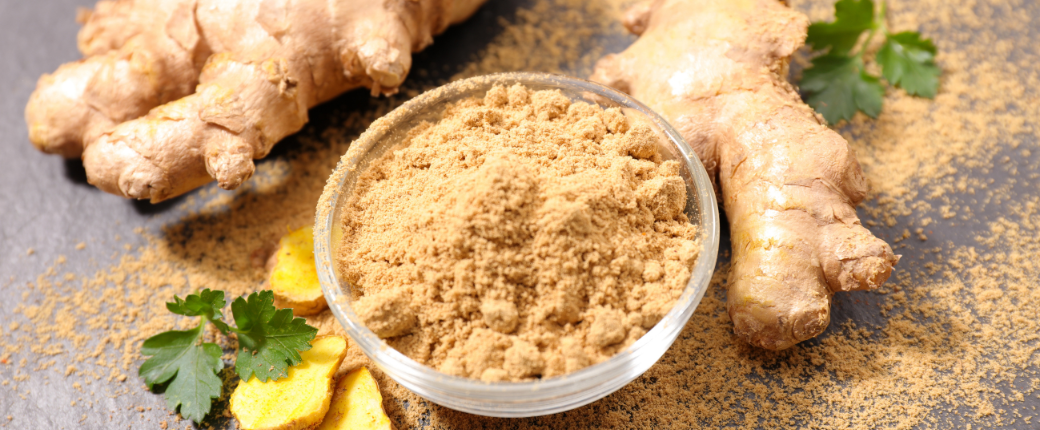
Ginger
The only spice to appear in our cancer-fighting food list, and for good reason. Ginger adds a fragrant zest to both sweet and savory foods. The spicy “kick” from the root of Zingiber officinale, the ginger plant, is what makes ginger ale, ginger tea, candies and many Asian dishes so appealing.
Nutrition:
Gingerol is the compound in ginger that promotes digestion, which is also an aid in treating nausea. Ginger has over 400 naturally occurring compounds, and many are thought to be anti-inflammatory.
How To:
Ginger is a great fall warming spice. Try to make your own ginger tea by washing, peeling, and thinly slicing in crosswise sections. In your mug, place as many slices as desired, pour boiling water, and cover for 10 minutes.
Sign Up: Nutrition Newsletter!
Get more more of our Oncology Dietitian approved recipes, cooking videos, nutrition advice and more, straight to your inbox! Sign up for our Nutrition Newsletter here.
Cancer-Fighting Foods: Nutritional Guide
PEARS
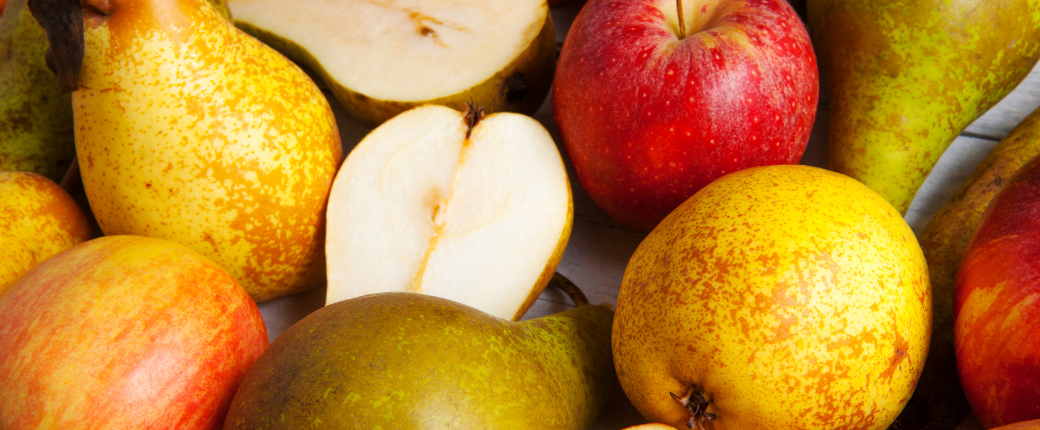
Pears
Like the apple, the pear is a member of the rose family. There are over 3000 varieties of pears throughout the world.
Nutrients:
Fiber
Pears provide a whopping 6 grams of fiber, higher than many other fruits. Fiber acts like a sponge as it travels through our digestive system to remove waste and other compounds that don’t belong.
How To:
Try roasting pears alongside fall vegetables like Brussels sprouts and delicata squash. The combination of sweet and savory is a flavor explosion!
SPINACH
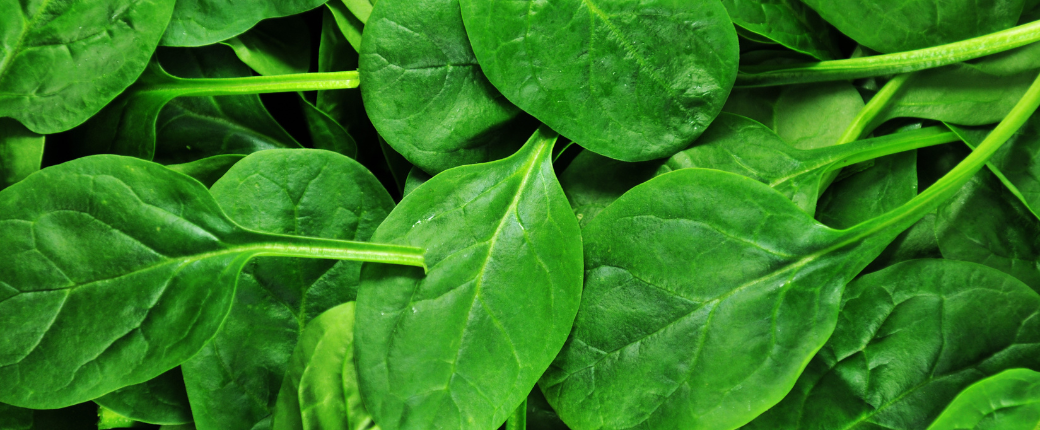
Spinach
In the 12th century, agronomist Ibn al-Awam referred to spinach as the “prince of leafy greens” in his work.
Nutrition:
Carotenoids
Function to modulate inflammation in our body and rev up the enzymes that support the detoxification of carcinogens.
How To:
A bag of baby spinach goes a long way when added to some of your typical meals, like eggs, soups, and pasta sauce.
BELL PEPPERS
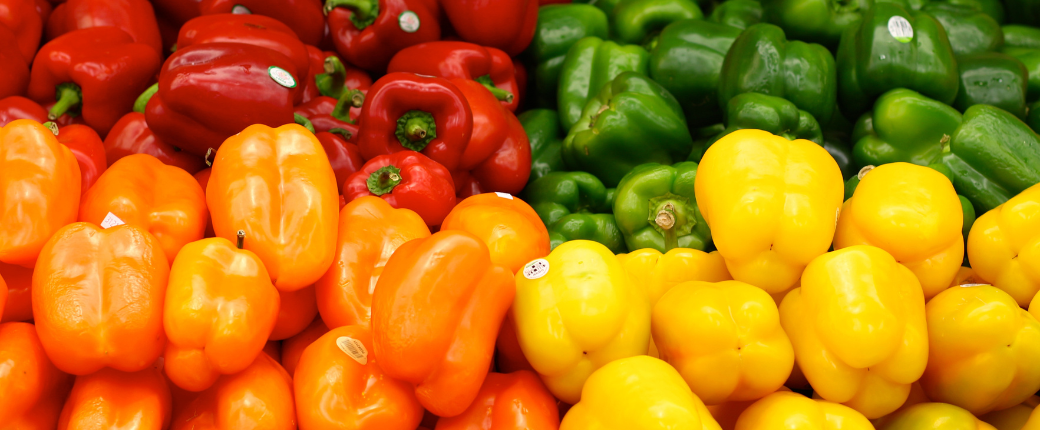
Bell Peppers
Did you know that red, orange, and yellow bell peppers are the ripened version of green bell peppers? Green peppers are commercially popular because they are easier to transport and store, because they are unripe.
Nutrition:
Excellent source of vitamins A and C. Good sources of Folate, Vitamins B6, Vitamin E and fiber.
Functions like an antioxidant to protect our cells from damage that could otherwise lead to cardiovascular disease or cancer.
How To:
Enjoy a simple yet tasty plant-based version of stuffed peppers. You could add either beans and salsa and top with guacamole or add lentils and mushrooms and top with marinara.
PERSIMMON
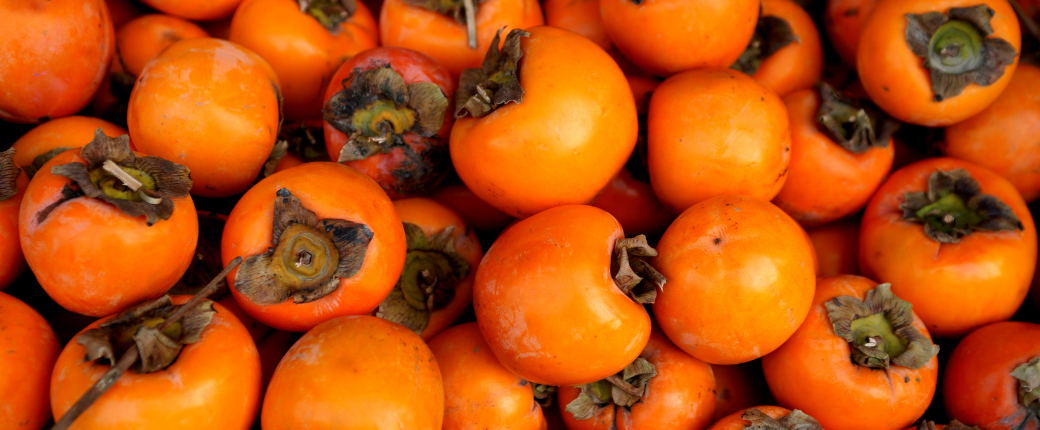
Persimmon
The two varieties most commonly found are the tomato shaped Fuyu and the acorn shaped Hachiya. To tell the difference between astringent and non-astringent Japanese persimmons, remember that red Hachiyas are acorn-shaped and inedible unless ripened and orange Fuyus are tomato-shaped and ripe when you purchase them.
Nutrition:
Excellent source of both vitamins A and C
Perhaps more than a coincidence, vitamins A and C are both essential vitamins that support the optimal function of our immune system.
How To:
To ripen your Hachiya, store leaf side down on your kitchen counter. This process can take days and should not be rushed lest you get a mouthful of tannins. Fuyus, however, need to maintain a crisp consistency and are better stored in the refrigerator.
Sign Up: Nutrition Newsletter!
Get more more of our Oncology Dietitian approved recipes, cooking videos, nutrition advice and more, straight to your inbox! Sign up for our Nutrition Newsletter here.
Cancer-Fighting Foods: Nutritional Guide
SWEET POTATOES
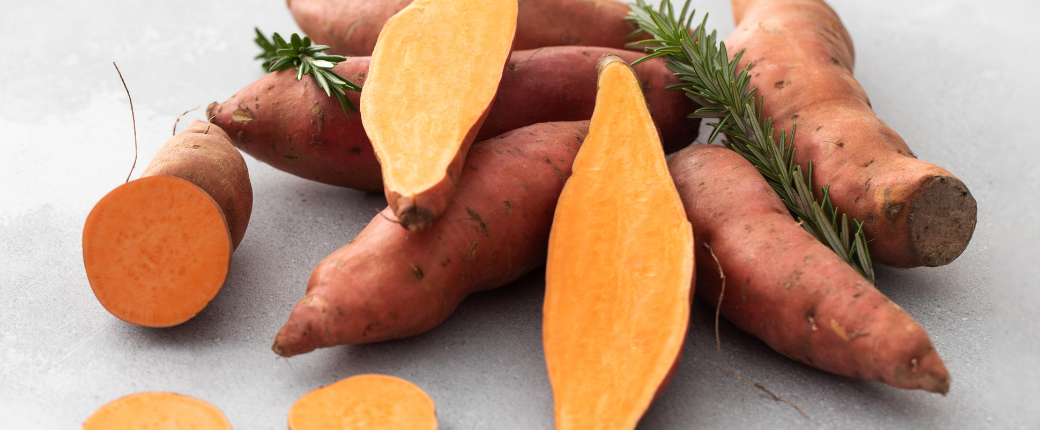
Sweet Potatoes
Perhaps a quintessential Thanksgiving tuber but deserving of our attention year-round.
Nutrients:
Powerhouse of nutrition: from the carotenoids to potassium to fiber.
Potassium is a mineral that many Americans do not consume enough of. It is important for regulating blood pressure. Did you know that sweet potatoes have about 100 more milligrams of potassium than a banana?
How To:
Bake, roast, or mash. These nutrient-dense tubers are a naturally sweet vehicle to add more plant foods to our plates. The options of herbs, spices, beans, lentils, nuts and seeds that partner with sweet potatoes are endless.
CELERIAC
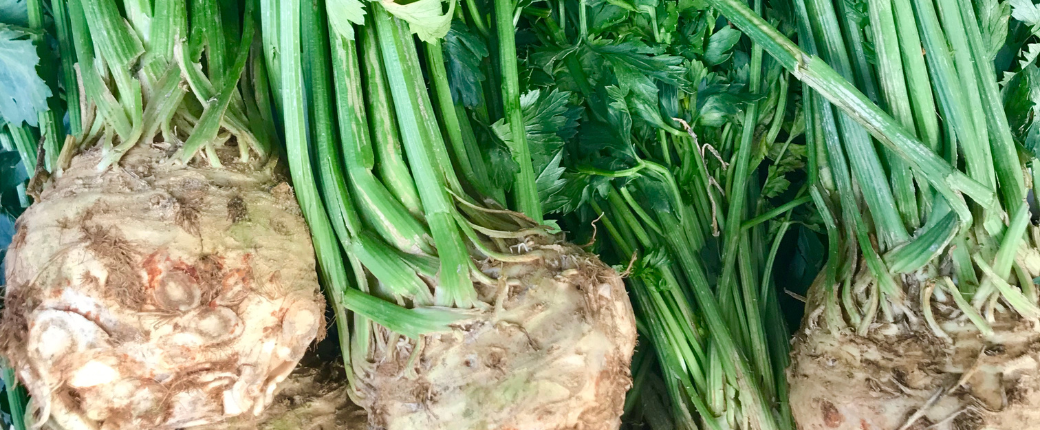
Celeriac
Also known as celery root or knob celery, it is entirely edible! It is an underappreciated root vegetable that makes its appearance in late fall.
Nutrition:
Fiber
Less than 10% of Americans eat the recommended amount of fiber. This non-nutrient occurs in many forms in plant foods and performs many different functions. The type of fiber in celeriac functions like a prebiotic, which means that it provides fuel for the beneficial microbes that live in our gut.
How To:
Enjoy this root vegetable both cooked and raw. Add peeled and chopped raw celeriac to a cold salad, or a hearty soup or stew. Celeriac is also delicious roasted alongside other fall and winter root veggies. Check out the newsletter for the mashed version to try!
CRANBERRIES
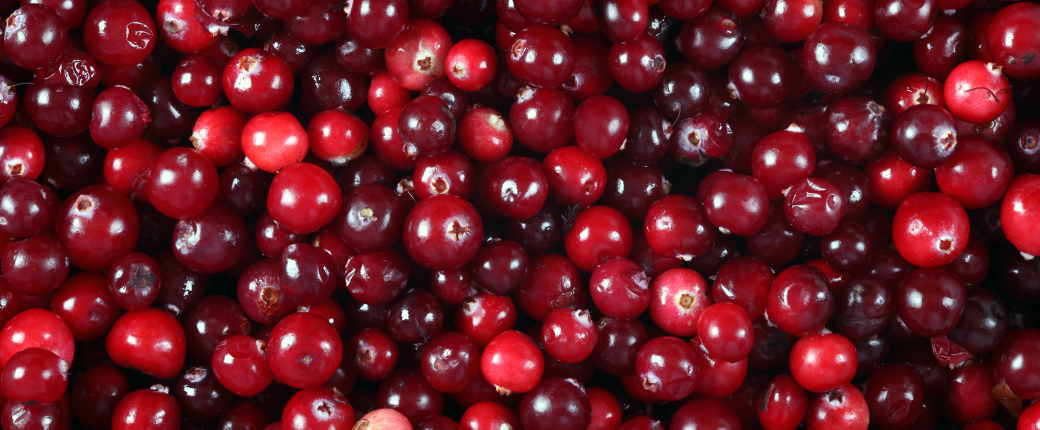
Cranberries
Another quintessential Thanksgiving food, but these powerhouses might be worthy of including during other times of the year.
Nutrition:
Phenolic compounds
These cancer fighters help promote apoptosis, which triggers cancer cells to self-destruct. In addition, they are anti-proliferative, a powerful mechanism in cancer protection.
How To:
Fresh cranberries are naturally bitter, so adding citrus like fresh orange juice/zest, or vinegars will help counter taste without all the extra sugars. Or try them to replace lemon in recipes; for example, if you roast some veggies, add some fresh cranberries for a sour pop of flavor.
DELICATA SQUASH
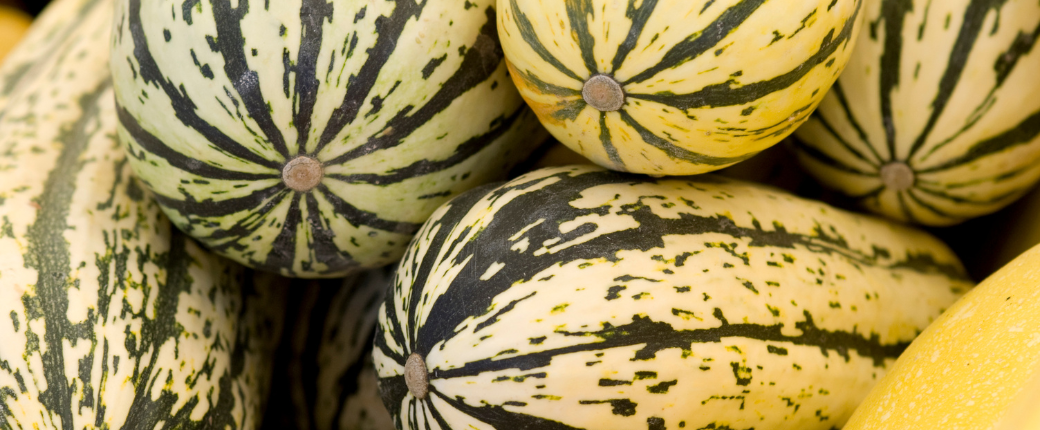
Delicata Squash
This is a variety of winter squash, which is why you only find it this time of year! Look for this special choice locally at your grocery stores and treat it like you would a sweet potato.
Nutrition:
Carotenoids
The deep yellow color is thanks to the carotenoids in delicata squash. Carotenoids are anti-inflammatory, which help to support an environment in the body making cancer cells less likely to replicate.
How To:
Did you know the entire delicata squash is edible?
Roasting delicata squash is surprisingly sweet and rich, but also effortless to do. Simply slice in half lengthwise, scrape out the seeds, and slice into ½ “ rounds before roasting for 20-30 minutes at 400 degrees.
Sign Up: Nutrition Newsletter!
Get more more of our Oncology Dietitian approved recipes, cooking videos, nutrition advice and more, straight to your inbox! Sign up for our Nutrition Newsletter here.
Cancer-Fighting Foods: Nutritional Guide
CELERIAC
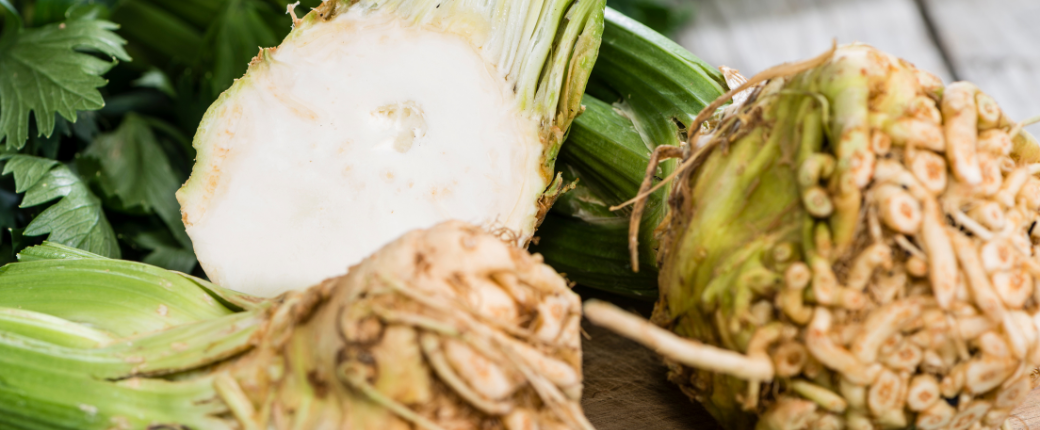
Celeriac
Also known as celery root, it is a versatile vegetable that is easy to cook and enjoy.
Nutrients:
Vitamin C is the most powerful antioxidant that supports our immune system this time of year
Osteocalcin is a hormone that is key for bone health
How To:
It has a nutty flavor and crunchy texture, which can be cooked or enjoyed raw. Try it raw and sliced into a salad or used in place for potatoes in almost any recipe.
RUTABAGA
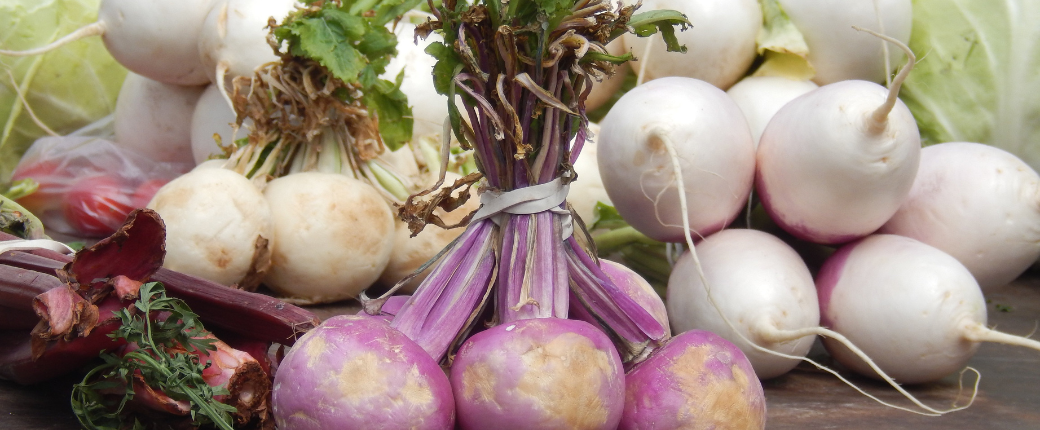
Rutabaga
A root vegetable in the mustard family, which are typically cultivated for their edible leaves and roots.
Nutrition:
Glucosinolates are sulfur compounds that are found in cruciferous veggies. They are powerful cancer fighters because they have been shown to protect against cancer cell development and prevent oxidative stress.
How To:
Enjoy fresh or cooked, they are delicious mashed, baked, or roasted. If you think they are too bitter, adding some sugar with counteract bitterness.
TURNIPS
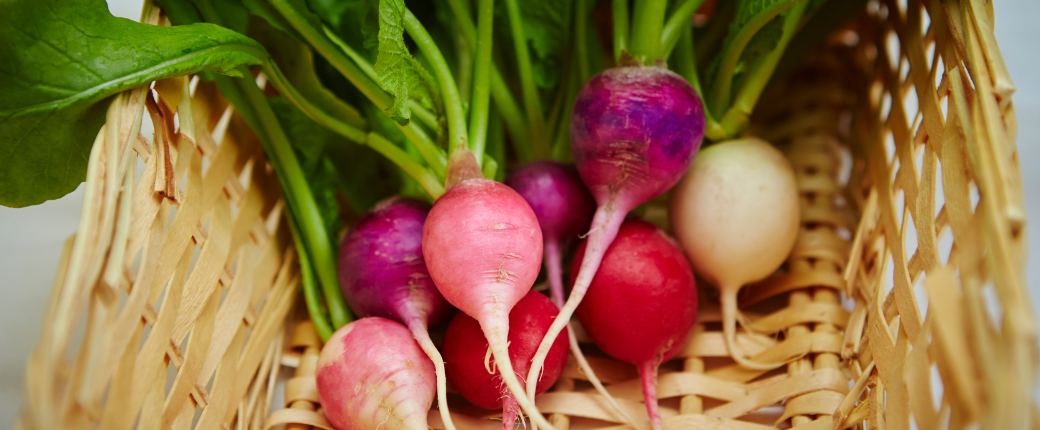
Turnips
Turnips have been cultivated for centuries!
Nutrition:
Fiber helps to promote gut health, controls blood sugars, and helps control appetite.
Potassium is a mineral important for controlling blood pressure and supports bone health. Most Americans do not consume enough potassium in their diet.
How To:
Similar to celeriac, they can be swapped for potatoes in most recipes. Try baking them as turnip fries!
PARSNIPS
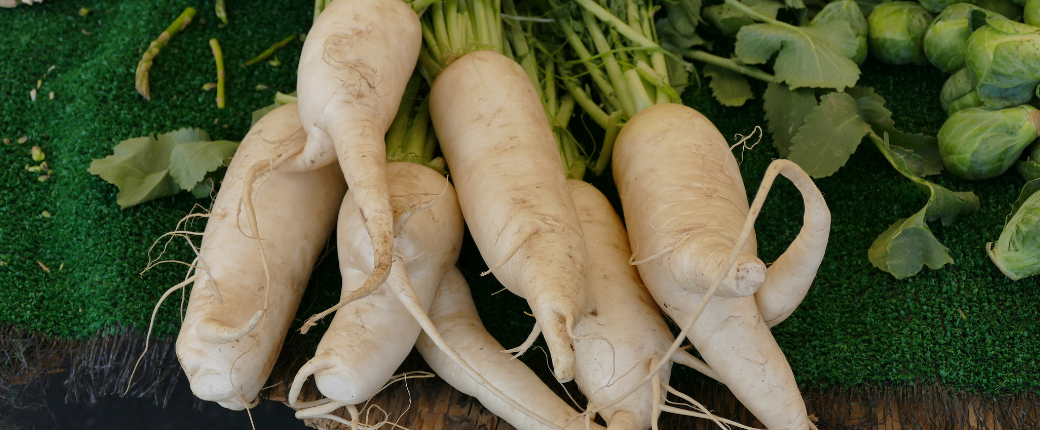
Parsnips
Contrary to popular belief, parsnips are not a genetic mutation of carrots but are botanically related.
Nutrition:
Falcarinol is a phytochemical that possesses anti-inflammatory properties
How To:
Just like all the other root vegetables, parsnips can be used in the same ways that you use any of them. Combine them with warming spices like ginger, nutmeg, cinnamon, or cardamom for flavor and a bonus of nutrition.
Sign Up: Nutrition Newsletter!
Get more more of our Oncology Dietitian approved recipes, cooking videos, nutrition advice and more, straight to your inbox! Sign up for our Nutrition Newsletter here.


